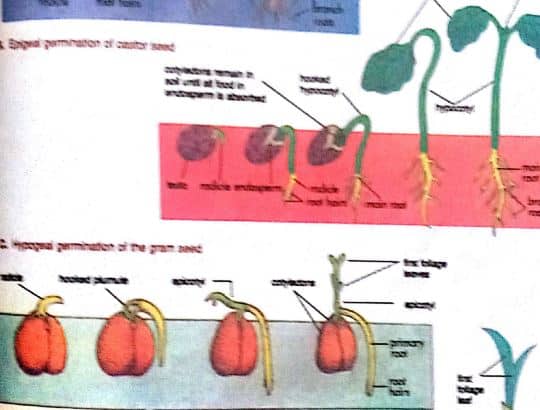2 Types of Germination With Examples

Seeds usually germinate in two ways: epigeal and hypogeal germination. Germination refers to all the changes that occur when the embryo in a seed resumes its growth and development to become an independent seedling. For germination to occur, there are conditions necessary. The external environmental conditions include sufficient water, suitable temperature, and adequate oxygen supply. Water is crucial for seed germination in these conditions, as most seeds are dehydrated. The water is needed to provide a medium for metabolic reactions, activate the enzymes, and transport nutrients to the growing regions of the embryo.
Seed undergoes a process before it germinates. Germination begins when a seed takes in water rapidly, first by absorption or imbibition and later by osmosis. The issues of the seed swell as this occurs, causing the testa to rupture.
Read: Simple farm tools and their uses
Types of Germination
Epigeal Germination with Examples
In epigeal germination, the hypocotyl grows rapidly and elongates, carrying the cotyledons above the soil, where they usually carry out photosynthesis before the first foliage leaves develop.
Examples of epigeal germination: This type of germination occurs in castor and cowpea plants
Hypogeal Germination with Examples
In hypogeal germination, the epicotyl grows rapidly and elongates, leaving the cotyledons in the soil. The epicotyl then grows, and the plumule develops into a shoot. The cotyledons fall off once the first foliage leaves grow.
Examples of hypogeal germination: Maize, gram see, and yam bean germinate this way.
